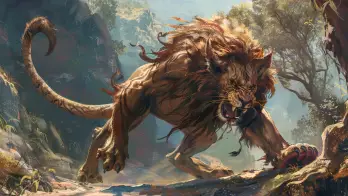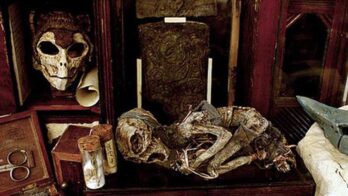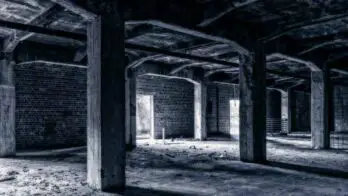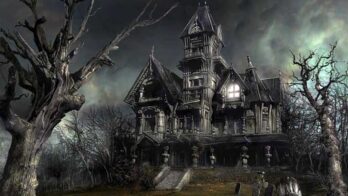Vampires are often depicted as undead, nocturnal, and cannot tolerate sunlight. They are also said to have superhuman strength, agility, and the ability to shape-shift into bats, wolves, or mist.
Vampires are typically portrayed as charismatic, seductive, and dangerous, with the power to hypnotize their victims and control their minds.
They are considered immortal unless killed by specific means such as a stake through the heart, exposure to sunlight, or decapitation.
The origins of the vampire myth can be traced back to various cultures around the world, with the most well-known being the ghoul legends of Eastern Europe.
These stories often involved the exhumation of corpses believed to be undead and the use of various methods to prevent them from rising from the dead and attacking the living.
Etymology
The legend of the undead is universal, and each culture has its own name for the monster.
The word “vampire” (sometimes written as “vampyre”) originates from the Slavic languages – where “vam” means “blood,” and “pir” means “monster.”
To name a few other appellations for vampires in various languages, there is the Old English “vampyr,” Latin “sanguisuga,” Serbian “vampir,” Russian “upyr,” Polish “upirs,” and Greek “brucolacas.”
Bram Stoker's Dracula
Most modern depictions of vampires as fictional characters draw heavily from Bram Stoker’s 1897 novel “Dracula,” which has come to define the popular image of the vampire.
Stoker was a highly successful theater director in late Victorian London, and his novel reflects the influence of the dramatic style of his time.
The book reads as though it were written to be performed on stage, and indeed it has formed the basis of many plays and films.
The vampire in “Dracula” is a Transylvanian nobleman who inexplicably becomes undead.
This character was inspired by the life of Vlad the Impaler, the son of Vlad Dracul and ruler of Wallachia, who fought against the Ottomans in the 15th century, killing over 20,000 Turks in a single battle.
However, Vlad’s reputation as a cruel and bloody man is largely due to Saxon stories encouraged by the King of Hungary, who sought to undermine Vlad’s authority because of the harsh measures he had taken against Saxon merchants.
Stoker’s Dracula established the typical vampire appearance: a long black cloak, impeccable manners, a pleasant appearance, intelligence, and a morbid pleasure in evil.
Although most of the story takes place in England, the primary market for his book, Dracula originated from Wallachia.
And Stoker had a good reason for choosing this distant Balkan location for Dracula’s origins, as the region is the birthplace of many legends about ghouls and strigoi.
The belief in blood-sucking creatures has existed in this area for centuries, and rumors about their existence spread throughout Europe from the end of the 18th century.
However, details about these creatures were scarce during Stoker’s time in Britain, giving him the freedom to reinvent the legend as he saw fit to write his frightening novel.
Despite the influence of Balkan vampire legends on Stoker’s work, the Count Dracula of his novel bears little resemblance to the bloodthirsty creatures of East European folklore.
According to these legends, anyone could become a vampire, regardless of social class or how innocent their life may have been.
The mixture of human blood and a vampire’s desire was sometimes enough to condemn a peasant or an ordinary merchant to spend eternity as an undead craving for blood.
However, according to these legends, most victims don’t even turn.
Instead, they simply fell mysteriously ill, displaying symptoms such as fatigue and pale skin, which were believed to be due to the loss of blood from the ghoul’s bite.
In fact, it was enough for two or three people from the same village to exhibit these symptoms to convince locals that they had been attacked by a vampire who had come out at night in search of victims.
Ancient myths and legends
As most enthusiasts of the genre will attest, the vampire mythos has roots that run much deeper than Bram Stoker’s famous novel “Dracula.”
In fact, evidence suggests that tales of undead blood-suckers have been a part of ancient mythology for centuries, with accounts dating back to the days of the Greeks, Romans, and Mesopotamians.
What is particularly interesting about these ancient vampire myths is their striking similarity, despite these civilizations having little to no contact with each other.
This has led many scholars to speculate that the vampire myth may have some basis in reality and that these stories may be based on actual encounters with creatures that fed on human blood.
Historically, references to supernatural beings that feed on the blood or flesh of the living have been ubiquitous in various cultures worldwide.
However, it is worth noting that the term “vampire” was not used in ancient times to describe these bloodthirsty monsters.
Instead, they were largely portrayed as evil spirits or demons, and in some beliefs, the Devil himself was synonymous with the idea of a ghoul.
Similar stories can be found in Mesopotamian mythology, where the goddess Lamashtu was believed to prey on children and pregnant women. She was said to have a lion’s head and eagle’s talons, and would feast on the blood of her victims.
In India, the legend of Vetala, an evil spirit with vampire-like traits, has been passed down through generations.
This demon haunted cemeteries and could possess the bodies of the dead. The reanimated bodies did not rot as long as they were under the control of Vetala, and the demon used them to move around and induce terror among the communities.
Vetala was often associated with madness, disease, or death.
The myth of Vetala is presented in detail in “Baital Pachisi,” a chapter of “Kathasaritsagara.” Here, readers can learn about a powerful king named Vikramaditya and his relentless struggles to capture Vetala, “the one who cannot be captured.”
Ancient Persian legends also feature creatures with vampire-like traits.
In addition to numerous writings discovered in recent decades, archaeologists have unearthed ceramic fragments depicting scenes with bloodthirsty demons.
Myths about the legendary creature Xortdan are present in the folklore of the Azerbaijan region.
According to these tales, Xortdan has risen from the grave and had the power to transform into any animal it desired, allowing it to feed on the life essence of its victims.
Finally, in Assyrian and Babylonian mythology, we find the myth of Lilitu (later known in Hebrew mythology as Lilith) and her daughters, the Lilu. According to the beliefs of these ancient peoples, Lilitu was a demon who fed on the blood of newborns.
The Eastern European vampires
The legend of the vampire is an integral part of the cultural heritage of Eastern Europe. One of the creatures embodying this legend is the Vrykolakas, which is similar to its Slavic counterpart.
According to the myth, a wax cross inscribed with the words “Jesus Christ conquers” had to be placed on the deceased’s chest to banish the Vrykolakas.
In old Albanian folklore, we find the Dhampirs, hybrid creatures born from the union of humans and either Karkanxholl, a werewolf-like being, or Lugat, an aquatic spirit.
Dhampirs are known for rebelling against and killing their parents, and they are believed to be the only ones capable of killing Lugats, spirits that are invisible and intangible to humans.
Greek and Roman mythology
In the annals of Greek and Roman mythology, it was believed that the deceased required a coin in their mouth to traverse the River Styx and enter the afterlife.
However, this coin served a dual purpose – it acted as a talisman to ward off malevolent spirits or demons that might attempt to invade and possess the deceased’s body.
The vampire mythos is a prevalent theme in Greek and Roman mythology, where three distinct representations are encountered: Lamia, Empusae, and Strix.
Lamia was a nocturnal creature that preyed upon children. It would bide its time, waiting for them to fall asleep, before descending upon them to feed on their blood and flesh.
As time passed, Empusae and Lamia lost their original vampiric traits and became more associated with witches and demons, respectively.
Empusae, on the other hand, were the offspring of the goddess Hecate, a demonic entity with colossal bronze feet.
Hecate would often take on the guise of a beautiful maiden to seduce young men, particularly virgins, and then proceed to feast on their blood.
The existence of similar myths and legends across various ancient civilizations and cultures, concerning bloodthirsty monsters, suggests that the concept of vampiric creatures is not a mere coincidence but a universal human fascination.
What is the early depiction of vampires?
The depiction of vampires in folklore is often shrouded in mystery, with varying attributes assigned to them depending on the region and era.
For instance, in ancient times, ghouls were often depicted as chubby, perhaps due to the belief that only aristocrats could transform into blood-hungry undead.
However, one consistent aspect of the myth is their insatiable thirst for human blood or other life essences, a trait central to their identity.
In order to feed, these creatures are often said to possess sharp teeth or fangs, which they use to puncture their victim’s skin and extract their precious life force.
Furthermore, vampires are typically described as undead, having somehow returned to life after death.
Many tales claim that they rise from their graves or coffins at night, often requiring the presence of their native soil to sustain their existence.
In terms of appearance, they are frequently depicted with pale skin and can range from repulsively grotesque to strikingly beautiful, depending on the story.
Additionally, they are often associated with an inability to cast a reflection or shadow, a characteristic that translates into a difficulty being photographed or filmed.
What is the vampire curse?
The vampire curse is a fictional concept commonly associated with the undead lore. It is often portrayed as a supernatural affliction that transforms a human into a ghoul or forces an already transformed vampire to feed on the blood of the living.
In many depictions, the curse is passed on through a bite, which injects venom into the victim’s bloodstream and triggers a transformation process.
Once the curse takes hold, the victim becomes undead, gaining enhanced physical abilities and an insatiable thirst for blood.
The curse also renders the creature vulnerable to certain weaknesses, such as sunlight and silver.
The specifics of the curse can vary depending on the mythos or story, but the common thread is that becoming a vampire is a curse that cannot be reversed.
The idea of how one can become a vampire varies greatly across different mythologies and folklore around the world. One of the most well-known methods is the act of being bitten by a vampire, which is a common theme in Western European folklore.
According to these tales, a vampire’s bite could transform an ordinary human into an undead creature thirsty for blood.
In some parts of the world, such as China, it is believed that becoming a vampire can also result from an animal bite. In Chinese folklore, if someone is bitten by a dog or cat, they must immediately treat the wound with boiled water or risk becoming a vampire.
In Slavic mythology, the transformation into a ghoul is sometimes viewed as a form of punishment for one’s sins.
According to this belief, those who rebelled against the Orthodox Church and ordinary people who engaged in immoral acts may be cursed to become a vampire after death.
In some African cultures, it is believed that a person who dies outside of their community or without proper burial rituals may become undead.
This belief is particularly prevalent in the cultures of West and Central Africa, where there is a strong emphasis on the importance of ancestral spirits.
Regardless of the specific method, the common thread among vampire myths is that the transformation process is often shrouded in mystery, with a sense of dread and danger.
How to protect yourself against a vampire
Within folklore and legend, there are several ways in which an individual can become a vampire. In addition to the previously discussed methods, there are various other ways in which a person can become a bloodthirsty creature.
For instance, in some Slavic myths, it is believed that a baby born with hair is destined to become a vampire upon death. In Turkish legend, an unborn child can become a vampire if a cat jumps over the mother’s body before she gives birth.
Once a vampire is believed to be present in the community, the signs of their presence are typically ominous and distressing.
The relatives of the deceased are often the first to be affected by the vampire’s presence. They experience an array of terrible misfortunes, such as the unexplained death of animals, destruction of property, and mysterious illnesses.
Sometimes, people feel like they are being followed by an unseen entity that wants to harm them.
To protect themselves from the vampire, the community erects a “protective barrier” using various means such as garlic, crucifixes, amulets, rosaries, holy water, or moving across running water.
In the most extreme cases, when traditional protective measures fail, people resort to identifying and destroying the vampire.
One method of identifying a vampire involves a ritual in which a virgin boy is led among freshly dug graves, and he indicates the undead’s burial place.
If the locals already have suspicions about who the creature might be, they exhume the presumed vampire’s grave. If the body is not decomposed, that is clear proof that the deceased has turned into a night creature.
In Southeast Europe, killing a creature of the undead variety is most commonly achieved through the brutal method of impalement, whereby a wooden stake is plunged directly into the heart.
In Silesia, the stakes used for this purpose must be fashioned from the mighty oak tree, renowned for its durability and strength.
Moving westward to the Germanic regions, decapitation is the preferred method of extermination, with the head of the vampire being interred either at the feet of the deceased or in a separate grave altogether.
Venturing further north, we find that a direct stake thrust into the skull was deemed most effective in dispatching the undead in Russia and certain northern German territories. Similarly, a stake thrust into the stomach was the method of choice in northeastern Serbia.
In Romania, a land steeped in legend and myth, people had unique ways of dealing with vampires.
Until the 19th century, it was customary to stuff the mouth of potential vampires with garlic heads as a preventative measure. Additionally, the use of firearms was not unheard of, with locals often shooting rifles and pistols into the suspected vampire’s coffin.
If all else failed and the curse remained unbroken, the final recourse was to exhume the vampire’s corpse, dismember it, and then burn the remains to ashes.
These ashes were then mixed with water and consumed by the deceased’s relatives, signifying the complete eradication of the vampire’s curse.
Vampires and witches in Sefer Hasidim
In Jewish folklore, Estries (also spelled as “Estrie” or “Strix”) are female vampire-like demons or spirits. They are said to fly at night and prey on children and men.
According to the legends, Estries are the result of the union between a demon and a human female, and they inherit the demonic traits of their father.
They are often depicted as seductive and beautiful women who use their charms to lure their victims into a vulnerable state before attacking them.
In some versions of the myth, Estries are believed to be able to transform into birds, especially owls or bats. They are said to suck the blood of their victims and sometimes even eat their flesh. Estries are known to avoid sunlight and are most active during the night.
According to the legends, they can be warded off with the use of holy symbols or prayers.
It is not widely known that the Sefer Hasidim describes various encounters with these creatures that possess witch-like qualities and feed on the blood of their prey:
Siman 1465:
And there are women who are called Estries. They were created in the west (before the first Sabbath, after Creation). For this reason, they can change their appearance.
A sick woman was Estrie, and two other women were sitting at her bedside; one was awake, and one was asleep.
The sick woman got up, let down her hair, and wanted to suck the blood of the sleeping woman. The awake woman screamed, waking the sleeping woman. They caught the Estrie, and she fell asleep.
If she had drunk the blood, the Estrie woman would have lived. But since she did not drink the blood, the Estrie woman died because she needed the blood of the living.
Since the Estrie woman cannot leave anywhere as long as her hair is tied, someone must tie her hair so that she cannot go without consent.
And if she is seen or harmed by anyone, she can only live by eating the bread and salt of the one who harmed her. Then her soul will return as it was before.
Siman 1466:
A woman was believed to be a witch, and she was injured when she appeared as a cat to a Jew. The following day, she asked the Jew for bread and salt, but he refused to give it to her.
Then an old man told him: ‘Do not take righteousness to extremes. When someone sins, show them kindness, because if they live, they will harm people. Thus, the Holy One, blessed be He, created her to be a test for you.’
Siman 1467:
There was a woman who was an Estrie, but she allowed her victim to take from her bread and salt. In such case, one should have mercy on her.
A remarkable account of vampirism
Dismissing the notion of vampires as a mere superstition is a convenient thought, but a plethora of recorded cases can hardly be ignored.
For instance, in 1732, an extraordinary case of vampirism was reported when a village near Belgrade was allegedly attacked by a vampire.
The prosecutor was of the opinion that a criminal or a lunatic was at large and, therefore, dispatched a team to investigate and apprehend the culprit.
When the investigators arrived, they discovered a village gripped by terror.
In the last few months, three girls and a young man from the same family had perished overnight under mysterious circumstances that defied explanation.
A couple of days after the investigators entered the village, a fourth girl, a member of the same family, woke up in the midst of the night and saw a human shadow looming over her.
The trespasser exuded an odor of decay.
The girl let out a blood-curdling scream, and her kin rushed to her aid.
The intruder fled, but the girl’s brother was able to discern his features. To his surprise, the attacker was none other than their grandfather, who had passed away three years earlier.
The following investigation revealed that the deceased grandfather exhibited signs of vampirism before his death. He had made several nocturnal visits to the homes of his relatives, seeking to feed on their blood.
Upon his death, the grandfather was buried in the village cemetery, but the villagers reported strange occurrences emanating from the grandfather’s grave, such as unexplained noises and movements.
Believing that he had risen from the dead as a vampire, the villagers dug up the grandfather’s body and found that it was still intact, with no signs of decomposition.
The villagers then staked the corpse, decapitated it, and burned the remains, finally bringing an end to the vampire attacks.
This incident had such an impact that it prompted the Austrian authorities, who had jurisdiction over the region at the time, to issue an official report on the case of vampirism in 1733.
This report is one of the most comprehensive documents on the subject of vampirism in history.
The origins of vampire myths
The origin of vampire myths is an enigmatic topic that has intrigued people for centuries. While many tales are purely fictional, some have a basis in reality.
The vampire myth is one such example, and it may have been inspired by a blood disorder called porphyria that has been present for millennia.
Porphyria is an inherited blood disorder that affects the production of heme, a vital component of hemoglobin, the protein in red blood cells that carries oxygen from the lungs to the body’s tissues.
Individuals with porphyria produce less heme than normal, leading to various symptoms.
Interestingly, the symptoms of porphyria are strikingly similar to those of vampire folklore.
For instance, individuals with porphyria are susceptible to sunlight and can experience facial disfigurement, blackened skin, and hair growth. Repeated attacks of the disease can also cause the gums to recede, giving the appearance of fangs.
It is not difficult to see how folklore could have arisen around these symptoms.
For instance, since individuals with porphyria only ventured out at night, they could have been perceived as seeking blood, and their fangs could have led to the creation of vampire tales.
Furthermore, the sulfur content in garlic can trigger an attack of porphyria, causing sufferers to develop a strong aversion to the vegetable.
The facial disfigurement caused by porphyria worsens over time, so patients understandably avoided mirrors, which could have led to the myth that vampires cannot see their reflection.
Sadly, during the Spanish Inquisition, many innocent individuals with porphyria were accused of being vampires and burned at the stake.
As a result, porphyria patients had a valid reason to fear the Christian faith and symbols such as the crucifix.
As for the corpses that did not decay, there are two plausible explanations.
The first explanation is that specific soil properties could slow down the normal decomposition process, and the body would appear intact after a few weeks or even months of burial.
However, decay is not halted, only slowed down, so driving a stake into the corpse would make it emit an unpleasant smell of decomposition.
The second explanation is more terrifying; some individuals enter a coma-like state resembling death. As a result, some people have been wrongly considered dead and taken to the morgue.
It is possible that, in the past, some of these unfortunate people were buried alive.
Anne Rice's influence on vampire mythology
In 1982, Stephen Kaplan, a parapsychologist and director of the Center for Vampire Research in Elmhurst, New York, uncovered a subculture of undead within the general population.
Kaplan estimated that approximately 21 “real” vampires lived in secrecy in the United States and Canada.
He interviewed several self-proclaimed vampires, some claiming to be centuries old, and conducted a demographic study of the population, revealing that Massachusetts had the highest number of vampires with three, followed by Arizona, California, and New Jersey with two each, while the remaining 15 vampires were dispersed throughout other states and provinces.
Today, Anne Rice, a prominent author known for her popular vampire novels, is widely accepted as an authority on vampire lore.
Her writing explores the complex nature of vampires as both powerful and tragic figures, portraying them as sophisticated and cultured beings capable of great beauty and cruelty. Rice is particularly interested in themes of mortality, immortality, and the human condition.
Among Rice’s most notable vampire characters are Lestat de Lioncourt, Louis de Pointe du Lac, and Akasha.
Lestat, the protagonist of several of Rice’s novels, including “Interview with the Vampire” and “The Vampire Lestat,” is a charismatic and arrogant vampire who revels in his immortality and power.
On the other hand, Louis is a more introspective and melancholic vampire who struggles with the morality of his actions and the price of his eternal existence.
Akasha is a powerful and ruthless vampire queen who seeks to dominate and control the vampire world.
In 2000, Margaret Mittelbach and Michael Crewdson published an article in The New York Times entitled “Vampires: Painting the Town Red,” which revealed that the vampire scene in American metropolises had grown increasingly strong since the mid-’90s.
Nocturnal dens, where up to 300 undead dance, drink, and revel until the early hours, have proliferated.
The dress code in such establishments is characterized by “gothic,” “black fetish,” “poppies,” “Wicca,” or “Celtic,” with black being the predominant color of clothing.
At Ancient Theory we only use trusted sources to document our articles. Such relevant sources include authentic documents, newspaper and magazine articles, established authors, or reputable websites.
- Benjamin Radford - Vampires: Fact, Fiction and Folklore. livescience.com.
- Spence Lewis - An Encyclopedia of Occultism. New Hyde Parks: University Books, 1960.
- Vampire History. history.com. [Source]
- Atwater Cheryl - Living in Death: The Evolution of Modern Vampirism. Anthropology of Consciousness.
- Vampire folklore by region. wikipedia.org. [Source]
- Abigail Tucker - Meet the Real-Life Vampires of New England and Abroad. smithsonianmag.com.
- Nick Lane - Born to the Purple: the Story of Porphyria. [Source]
- Vampire. britannica.com. [Source]
- Michael Hefferon - Vampire myths originated with a real blood disorder. theconversation.com.
- Theresa Cheung - The Element Encyclopedia of Vampires. Harper Collins, 2013.
- Deborah Mutch - The Modern Vampire and Human Identity. Palgrave Macmillan, 2013.
- Saul Epstein and Sara Libby Robinson - The Soul, Evil Spirits, and the Undead: Vampires, Death, and Burial in Jewish Folklore and Law. [Source]
- Allan A. Jon - Vampire Evolution. [Source]







